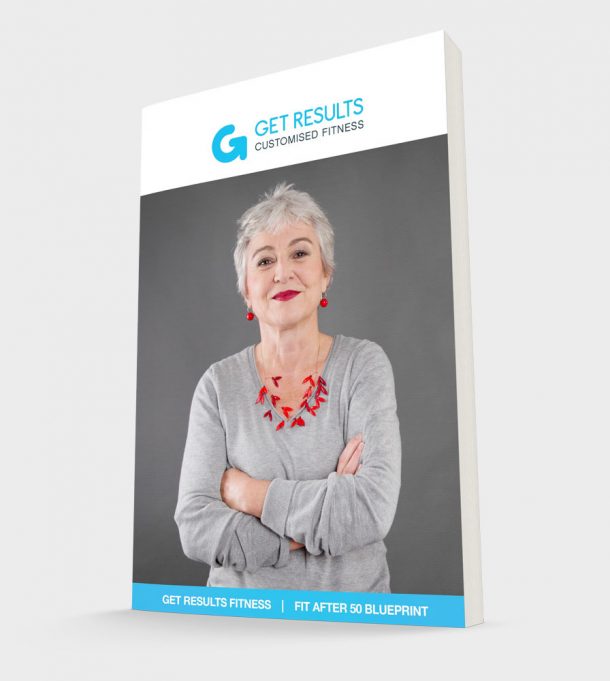
January is the time when you find your inbox bombarded with the latest fad on what will get you in amazing shape in the shortest possible time. Well, today I am writing this blog as the voice of common sense to anyone over 50 who wants to look better, feel better and move better, in a way that doesn’t break you and instead leaves you feeling like you are doing something really positive for yourself and your future.
Exercising in your 50’s should look different to what you did in your 20’s, however most of the programs out there will have you train in a way that is highly likely to cause injury. Training smarter is the most important factor as we get older. You must find a fitness regime that works personally for you.
The most exciting thing I want you to know today before we go into the details of what you should be doing, is that in both the research I have read and being in the trenches working with 1000’s of clients over the 17 years I have been in fitness, is that it is never too late to start exercising. The human body is an amazing piece of equipment; if you have neglected it for many years it will still respond very positively to a well-designed program and you will likely be amazed at what it can achieve with a little bit of care and attention.
Ok, so I thought a quick 3-point checklist of what a well-designed program should cover would be a good place to start for you:
- Keep moving
When many people reach their 50’s and 60’s, they experience some weight gain and a common belief around this is that it just their metabolism slowing down as a natural part of ageing. However, the research seems to dispel this belief as the levels of the metabolism slowing down as we age is pretty minimal (women do have a slightly harder time through the hormonal changes their bodies will be going through, but again for most this is not a huge contributor.)
It is believed that changes in lifestyle are actually the biggest contributor to weight gain in the over 50’s and the biggest culprit is a reduction in physical activity. It was is believed that this could be down to less participation in sports, more time spent sitting around etc.
An easy fix for this one is to make yourself consciously more active: pick up your old sports again, arrange walks with friends, walk rather than taking the car, meet friends for walks rather than a coffee; move around the house more often and just generally spend less time sitting.
- Aim to cover all areas of fitness
Everything in the body is interlinked, so make sure you cover all your bases by challenging all aspects of fitness; strength, cardiovascular fitness, mobility, endurance, balance and motor skills. A decrease in any of these areas may be just be what undoes you. For example, a gym goer who is not working on mobility may be at higher risk of injury as their body cannot go through the full range of motion.
To stay strong and healthy a good program should include a degree of lifting weights, doing something that gets you hot and sweaty, doing some stretching and mobility work, as well as challenging your balance and reaction skills.
Always listen to your body and aim to work away from any pain areas. If lunges hurt your knees, there are plenty of alternatives that will still work the same muscle groups.
Aim to take a long term view to your fitness. We want you to continue to do a pretty full-on workout well into your 80’s and 90’s, so powering through pain for the sake of your ego can be a really bad idea.
Finally, I wanted to make a special mention for ensuring that you work on power –( the ability to exert a maximal force in as short a time as possible) – as power and particularly power in your legs is what declines the fastest as we age. So after you have mastered the basic movements and added some load, it is important to incorporate some faster paced movements also.
- Take a holistic approach
Late nights and a poor diet are something you can get away with and still get your workouts done when you are in your 20’s and 30’s. However, as we get older if we want to be truly fit and healthy we must look at all areas of our life. Making sure we are getting enough quality sleep (sleep at the right time 10pm-7am); eating a diet full of veg and high quality meats, pulses and lentils; managing our stress levels; limiting alcohol intake to an appropriate level and drinking plenty of water will all mean that you will turn up to your workouts feeling fresh and ready to work hard.
Ensuring adequate recovery with all these things in place between workouts will allow your body to adapt and change to the workouts, leaving you feeling fitter, stronger and most importantly younger.
So this year rather than looking to lose weight for your spring / summer holiday, why not look at building a bulletproof body that will support you to live a full and enjoyable life for many, many years to come.
If you would like any advice on any of these points discussed, drop me an email at paul@www.getresultsfitness.co.uk


